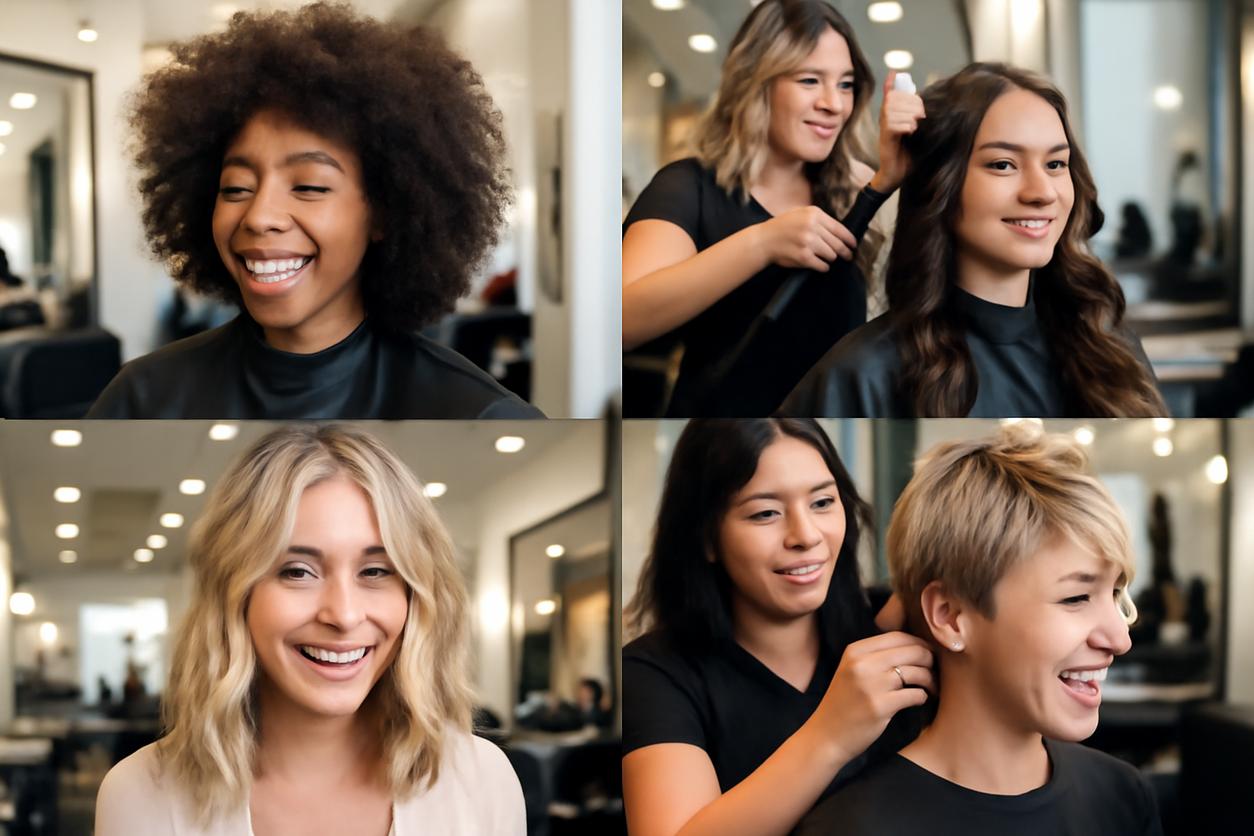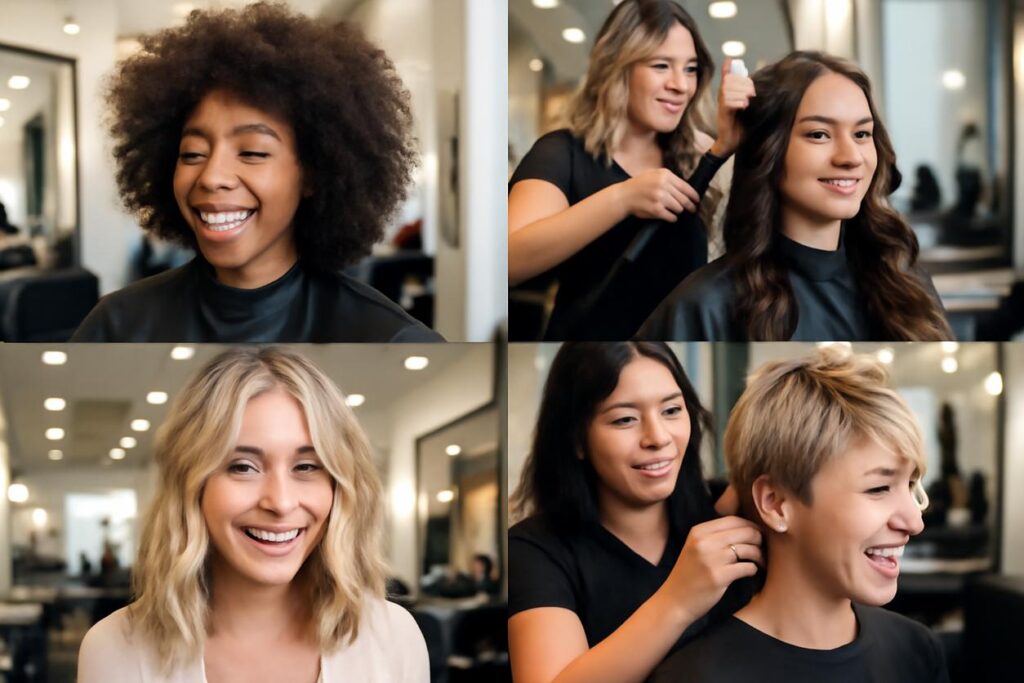Table of Contents
- Introduction — Why make a homemade hair mask
- How to assess your hair: porosity, texture and common issues
- Simple porosity test you can do at home
- Key ingredients explained: proteins, oils, humectants and butters
- Benefits and cautions for each ingredient
- Safety first: allergy checks and ingredient pairings to avoid
- Recipes by concern
- Hydrating mask for dry hair
- Lightweight mask for oily roots and dry ends
- Protein boost for damaged or chemically treated hair
- Nourishing mask for curly hair definition
- Step by step application and timing
- Frequency, results tracking and when to pause protein treatments
- Troubleshooting common problems and adjustments
- Frequently asked questions
- Conclusion and next steps for healthier hair
*Quick at home variations and ingredient swaps
Unlock Your Best Hair: The Ultimate Guide to a DIY Hair Mask
Welcome to the world of personalized hair care! If you’re tired of scanning endless store shelves for the perfect treatment, a DIY hair mask might be the solution you’ve been searching for. Creating a mask at home puts you in complete control, allowing you to select fresh, potent ingredients tailored specifically to your hair’s unique needs. Forget one-size-fits-all solutions; a homemade hair mask is your ticket to addressing concerns like dryness, damage, or frizz with targeted, natural nourishment. Plus, it’s a budget-friendly and sustainable way to achieve salon-worthy results right from your kitchen.
How to assess your hair: porosity, texture and common issues
Before you start mixing, the most crucial step is understanding your hair. The effectiveness of any DIY hair mask depends on matching ingredients to your hair’s specific characteristics. The three key factors to consider are porosity, texture, and your primary concerns.
- Porosity: This refers to your hair’s ability to absorb and retain moisture. It’s determined by the structure of your hair’s cuticle layer. Low porosity hair has tightly packed cuticles, making it resistant to moisture, while high porosity hair has raised cuticles that absorb moisture quickly but also lose it just as fast.
- Texture: This describes the thickness of your individual hair strands. Is your hair fine, medium, or coarse? Fine hair is easily weighed down by heavy products, whereas coarse hair often requires richer, more intensive ingredients.
- Common Issues: What are you trying to fix? Common concerns include dryness, frizz, split ends, oily scalp, lack of volume, or damage from heat styling and chemical treatments. Identifying your main goal will guide your recipe choice.
Simple porosity test you can do at home
Not sure about your hair’s porosity? Try this simple test. Take a clean strand of hair (from your brush is fine) and drop it into a glass of room-temperature water.
- Floats at the top: You likely have low porosity hair. It repels moisture. You’ll need lightweight ingredients that can penetrate the hair shaft without causing buildup.
- Sinks slowly or floats in the middle: You have medium (or normal) porosity hair. Your hair maintains a good moisture balance and is the easiest to care for.
- Sinks to the bottom quickly: You have high porosity hair. It absorbs moisture easily but loses it quickly, often feeling dry or frizzy. You’ll benefit from sealing oils and proteins to help fill the gaps in the cuticle. For more scientific insights into hair structure, you can explore hair porosity research.
Key ingredients explained: proteins, oils, humectants and butters
The magic of a great DIY hair mask lies in its ingredients. Understanding the role of each component helps you customize your treatment for maximum impact.
- Proteins: These are the building blocks of your hair. Ingredients like eggs, Greek yogurt, and gelatin provide strength and structure, making them essential for repairing damaged or high porosity hair. They temporarily patch holes in the hair cuticle.
- Oils: Oils are fantastic for sealing in moisture, adding shine, and reducing frizz. They can be broken down into two types:
- Penetrating Oils: Such as coconut oil and olive oil, which can soak into the hair shaft to moisturize from within.
- Sealing Oils: Like jojoba oil and grapeseed oil, which coat the hair strand to lock moisture in and prevent it from escaping.
- Humectants: These ingredients draw moisture from the air into your hair. Honey, agave nectar, and glycerin are popular humectants that provide deep hydration, making them perfect for dry, thirsty hair.
- Butters: Rich and emollient, butters like shea butter and mango butter are excellent for intensely moisturizing and softening coarse, thick, or very dry hair. They provide a protective barrier to prevent moisture loss.
Benefits and cautions for each ingredient
While natural ingredients are wonderful, it’s important to use them correctly.
- Proteins (Yogurt, Egg): Benefit: Strengthens weak, brittle hair. Caution: Overuse can lead to “protein overload,” making hair stiff and dry. Use protein-based masks sparingly, especially if you have low porosity hair.
- Oils (Coconut, Olive): Benefit: Adds shine, reduces frizz, and moisturizes. Natural oils offer a wide range of benefits. Caution: Heavy oils can weigh down fine hair. If you have fine or low porosity hair, opt for lighter oils like almond or grapeseed oil and apply mainly to the ends.
- Humectants (Honey, Agave): Benefit: Excellent for hydration. Caution: In very dry climates, humectants can sometimes draw moisture *out* of your hair if there’s none in the air. It’s best to pair them with a sealing oil.
- Acids (Apple Cider Vinegar, Lemon Juice): Benefit: Can help seal the hair cuticle, adding shine and clarifying buildup. Caution: Highly acidic. Always dilute them heavily and use sparingly, as overuse can dry out your hair.
Safety first: allergy checks and ingredient pairings to avoid
Before applying any new mixture to your entire head, safety is paramount.
- Always perform a patch test. Apply a small amount of your DIY hair mask mixture to a discreet area of skin, like behind your ear or on your inner elbow. Wait 24 hours to check for any signs of irritation, redness, or itching.
- Use fresh ingredients. Avoid using food items that are past their prime, as this can introduce unwanted bacteria to your scalp and hair.
- Ingredient pairings to be mindful of: Avoid creating a mask that is overly acidic (e.g., mixing lemon juice and apple cider vinegar) as it can be harsh and drying. Similarly, don’t mix too many heavy oils and butters if you have fine hair, as it will lead to greasy, weighed-down locks.
Recipes by concern
Here are four simple, effective DIY hair mask recipes customized for common hair concerns. Remember to adjust quantities based on your hair length and thickness.
Hydrating mask for dry hair
This mask is perfect for parched, thirsty hair that needs a serious moisture boost. It’s ideal for medium to high porosity hair.
- Ingredients: 1/2 ripe avocado, 1 tablespoon olive oil, 1 tablespoon honey.
- Why it works: Avocado is rich in fatty acids and vitamins, olive oil penetrates to moisturize, and honey acts as a humectant to draw in moisture.
- Instructions: Mash the avocado until completely smooth. Stir in the olive oil and honey until you have a creamy, lump-free paste.
Lightweight mask for oily roots and dry ends
This clarifying and lightly hydrating mask balances an oily scalp without weighing down your ends.
- Ingredients: 2 tablespoons plain yogurt, 1 teaspoon honey, a few drops of tea tree oil (optional).
- Why it works: Yogurt contains lactic acid, which gently cleanses the scalp, while honey provides lightweight moisture for the ends. Tea tree oil has clarifying properties.
- Instructions: Combine all ingredients in a bowl and mix well.
Protein boost for damaged or chemically treated hair
If your hair feels mushy when wet and brittle when dry, it’s crying out for protein. This mask is great for high porosity or damaged hair.
- Ingredients: 1 egg, 2 tablespoons Greek yogurt, 1 teaspoon coconut oil.
- Why it works: The egg and yogurt provide a strong dose of protein to fill in gaps in the hair cuticle, while coconut oil adds moisture to prevent stiffness.
- Instructions: Whisk the egg thoroughly, then mix in the yogurt and melted coconut oil until smooth.
Nourishing mask for curly hair definition
Curls thrive on moisture and gentle nourishment. This mask provides slip, hydration, and helps enhance your natural curl pattern.
- Ingredients: 1/2 cup coconut milk (full-fat), 1 tablespoon jojoba oil, 1 tablespoon agave nectar.
- Why it works: Coconut milk is moisturizing and strengthening, jojoba oil mimics the scalp’s natural sebum to seal in moisture without being greasy, and agave provides hydration.
- Instructions: Mix all ingredients together until well combined. The mixture will be slightly runny.
Step by step application and timing
Getting the most out of your DIY hair mask is all in the application.
- Prep your hair: It’s often best to apply a mask to clean, damp hair. Shampoo your hair first and gently towel-dry it until it’s no longer dripping.
- Section your hair: Divide your hair into 4-6 manageable sections. This ensures you get even coverage from root to tip.
- Apply the mask: Using your fingers or a brush, apply the mask to each section. Focus on the mid-lengths and ends, as this is where hair is oldest and most in need of care. If you have a dry scalp, you can apply it to the roots; if you have an oily scalp, avoid the root area.
- Let it sit: Cover your hair with a shower cap or a warm towel to trap heat, which helps the ingredients penetrate more effectively. Leave the mask on for 20-30 minutes. Avoid leaving it on for hours or overnight, especially if it contains protein like egg or yogurt.
- Rinse thoroughly: Rinse the mask out completely with lukewarm water. Using water that’s too hot can be stripping. You may need to follow with a light conditioner to help seal the cuticle and remove any remaining residue.
Frequency, results tracking and when to pause protein treatments
Consistency is key, but so is listening to your hair.
- Frequency: For most hair types, using a hydrating DIY hair mask once a week is a great routine.
- Protein Treatments: Protein-heavy masks should be used less frequently, perhaps once every 4-6 weeks. Overusing protein can lead to brittle, stiff hair. Pay attention to how your hair feels. If it starts to feel dry or snaps easily after a protein treatment, it’s time to take a break and focus solely on moisture. Many professional resources, like Rich Hair UK, emphasize the importance of balancing protein and moisture.
- Track Your Results: Keep a simple journal. Note which mask you used and how your hair felt afterwards. Was it softer? Shinier? Did your curls have more definition? This will help you refine your recipes over time.
Troubleshooting common problems and adjustments
- “My hair feels greasy or weighed down.” You may have used ingredients that are too heavy for your hair type (like shea butter on fine hair) or you didn’t rinse thoroughly enough. Try using lighter oils next time, focusing application on the ends, and rinsing with cool water.
- “My hair feels stiff and brittle.” This is a classic sign of protein overload. Switch to purely moisturizing masks (like the avocado recipe) for the next few weeks until your hair’s moisture balance is restored.
- “I didn’t notice any difference.” Your hair might need a different approach. If you have low porosity hair, the ingredients might not have penetrated. Try applying the mask and using a hair steamer or a warm towel to help open the cuticle. Consistency is also important; sometimes results are cumulative.
Quick at home variations and ingredient swaps
Don’t have an ingredient on hand? No problem! Most recipes are flexible.
- No Avocado? Use a ripe banana instead for a moisture-rich, potassium-packed alternative. Just be sure to blend it extremely well to avoid chunks.
- Oil Swaps: If you find coconut or olive oil too heavy, swap them for lighter options like almond oil, grapeseed oil, or jojoba oil.
*Vegan Options: Instead of yogurt or egg for protein, consider using a small amount of soy milk or a specialized protein powder designed for cosmetic use. For a vegan humectant, agave is a perfect swap for honey.
Frequently asked questions
Do I apply a DIY hair mask to wet or dry hair?
Generally, applying to clean, damp hair is best. It allows for better absorption of water-based ingredients. However, oil-based pre-shampoo treatments can be applied to dry hair.
Can I leave a DIY hair mask on overnight?
It’s generally not recommended, especially for masks containing protein (like egg or yogurt) or acidic ingredients, as this can cause damage or bacterial growth. A 30-minute treatment is usually sufficient for ingredients to penetrate.
How do I get a lumpy mask out of my hair?
Prevention is key! Blend ingredients like avocado and banana until they are completely smooth. If you do end up with bits in your hair, rinse thoroughly and use a conditioner with lots of slip to help comb them out gently.
Conclusion and next steps for healthier hair
Crafting your own DIY hair mask is an empowering, effective, and enjoyable way to take control of your hair health. By understanding your hair’s porosity and needs, choosing the right ingredients, and applying them correctly, you can create a personalized treatment that delivers visible results. Remember to listen to your hair, track your progress, and don’t be afraid to experiment with different combinations. Your journey to stronger, shinier, and healthier hair is just a few simple kitchen ingredients away.





